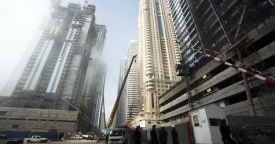
Such data was revealed last week by several consultancies, whose findings, in turn, were strongly criticized by Damac CEO. Should we believe the forecasts, and if so, than to what extent?
Contradictions as the main characteristics for data, given on the Dubai real estate market development, still prevail in the analysts’ reports. Last week, two leading analytical agencies presented their vision of the situation in the emirate’s housing market.
Cavendish Maxwell in its latest report for the third quarter of the year has estimated that residential property prices in Dubai were decreasing from July to September as slowly, as in the second quarter. On average, the decline was about 2% in the last three months, and about 6% to 9% year-on-year for apartments and villas, respectively, although other consultancies had previously predicted much more significant drop in prices to Dubai.
Such Dubai areas like Dubai Sports City, Dubailand, International City, Jumeirah Golf Estates, and Jumeirah Village Circle, saw 6,000 new housing units delivered in the third quarter, Cavendish Maxwell said, which largely determines the change in real estate prices. However, in this respect, those data is not as clear as it seems, which forced Ziad El Chaar, the head of Dubai’s master developer Damac, to question major analytical forecasts concerning Dubai’s housing market supply volume.
El Chaar said that the figures on the planned housing stock expanding are often overstated. In particular, emirate will get no more than 10,000 apartments and houses out of 25,000 new housing units, which, according to analysts, should have entered the market in Dubai in 2015. Therefore, there is no chance for the property oversupply in Dubai so far, said El Chaar. According to the Dubai Statistics Centre, Dubai's annual population growth in the coming years will be 5-7%, and the housing stock is now increasing by 2.2% pa, thus the supply demand balance will tend to the predominance of demand over supply in the future years.
The situation in the Dubai rental market remains highly uncertain, with sudden ups and downs, depending on the area, Land Sterling experts noted last week. Thus, while studio rentals in some areas, such as IMPZ, grew by 13% in the last three months, other Dubai locations like Downtown, Jumeirah Lakes Towers and Dubai Marina, on the contrary, saw a moderate decrease in rentals, by an average of no more than 2-4%. However, even within the same city district both a decrease and increase in rentals can be observed, it all depends on the size of the property. This is due to different demand levels for small-sized and spacious apartments. Small studio apartments in affordable areas are the most demanded property item in Dubai for now. However, premium housing, which is also always in demand in this oasis for billionaires and luxury, does not fall in price, nor equally shows any increase.
Thus, this week’s news showed that every cloud in the Dubai’s property skyline, forecasted by the precautionary analysts, has a silver lining. Any slide in the Dubai real estate market is smoothed by those foresighted, who were able to build a safety net in the days of prosperity and growth.







